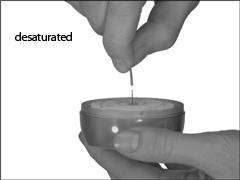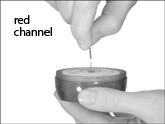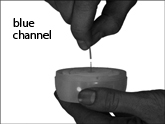For a past project (designing a user guide for a medical device), I had to convert 18 different color images to black and white. There are many ways to convert color to black and white, each with varying degrees of difficulty and varying results. But particular to this project was the need for consistency in converting color to black and white, as I was working with 18 different color images that ultimately needed the same look and feel once converted.
The first step was to extract the background from the images. You always want to eliminate any unnecessary elements from the picture prior to any type of color conversion or before performing any altering effects.
Some of the more basic methods of converting to black and white (converting through grayscale mode and desaturating) provided the limited subjective input I needed, but severely lacked in quality.
Converting through a single channel, such as the red channel, to grayscale gave some nice results. However, it was inconsistent due to the difference in conversions from image to image because of varying colors present in the original images.
Not to go unmentioned, the channel mixer is an excellent tool, and for sure the most sophisticated for color conversion. But as such, the channel mixer provides too much subjectivity for this project and proves to be a nightmare in achieving consistency across 18 images.

The method that worked best for this project was converting color images to black and white with the lab color mode, giving consistent conversions and excellent quality in the final results.
The following is the work-flow used:
Image>Mode>Lab Color … from here you go to Channels, click on the Lightness Channel, then Ctrl A (to select all), Ctrl C (to copy) the Lightness Channel.
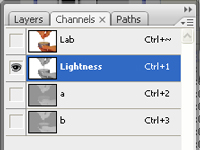
From this point forward, I’ve seen a couple of different techniques that people do. What I like to do, and originally learned at the Digital Photography School, is to convert back to RGB mode, then click on Channels and paste the Lightness channel into EACH of the Red, Green and Blue Channels. (You can also do the same in CMYK mode for even richer results or for print media.)

This seems to create a nice, rich and open black and white image, that up till now has had no subjective influence. This technique presented quality conversions with consistent results, exactly what I needed for this particular project.
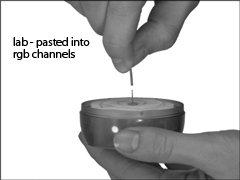
The only remaining adjustments (levels and curves) are slight and easily duplicated from image to image. Again, by using the lab color black and white conversion technique I was able to bring my images to a high level of quality before having to apply any subjective adjustment, this was key in choosing lab color as the best technique for this project.





